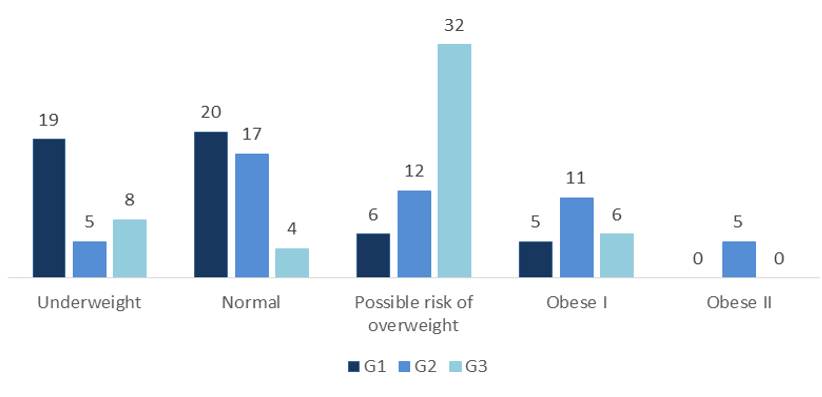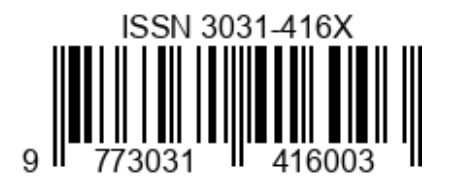Halal status and society acceptance of edible insects
Abstract
Feeding globally is considered a critical challenge for sustainable development, hence, protein, energy, and adequate micronutrients must be sustainably available to alleviate many community problems. In some parts of Indonesia, such as Gunungkidul, Yogyakarta, approximately 60% of people consume protein less than the adequacy level. Therefore, this study aimed to identify halal status of edible insects as a forgotten-fringe food to obtain a potential alternative source of protein-rich food in the future. The goal was to cover households with lower-middle income in fulfilling protein requirements, specifically in food-insecure areas. The results showed that six edible insects were identified as a forgotten indigenous protein source. These insects were forgotten majorly due to taste (yuck), allergies, inferior quality, complicated processing methods, and confusion over halal status. However, the identified forgotten foods had the potential to cover the insecurity condition in Gunungkidul. This might help poor households increase protein intake since often those forgotten foods are cheap and hunted freely.
References
Bakharudin AY, Yahaya MZ. Penggunaan serangga (al-Hasharat) dalam produk kosmetik menurut perspektif maslahah. BITARA International Journal of Civilizational Studies and Human Sciences. 2019;2(3):1-10.
Batu A, Regenstein J. Halal food certification challenges and their implications for Moslem societies worldwide. International Periodical for The Languages, Literature and History of Turkish or Turkic. 2014;9:111-130.
Belasco W. Food: The key concepts. Oxford: Berg; 2008. https://doi.org/10.5040/9781350042148
Benzertiha A, Kieronczyk B, Rawski M, Jozefiak A, Mazurkiewicz J, Jozefiak D, Messikh MS, Świątkiewicz S. Cultural and practical aspects of halal slaughtering in food production. Med Weter. 2018;74(6):371-376. https://doi.org/10.21521/mw.6023
[BKPP] Badan Ketahanan Pangan dan Penyuluhan. Peta rawan pangan dan gizi tingkat desa Kabupaten Gunung Kidul tahun 2016. 2016.
Bojorquez I, Unikel C, Cortez I, Cerecero D. The social distribution of dietary patterns: traditional, modern and healthy eating among women in a Latin American city. Appetite. 2015;92:43-50. https://doi.org/10.1016/j.appet.2015.05.003
Clearly DFR, DeVantier L. Indonesia: Threats to the country's biodiversity. In: Encyclopedia of environmental health. 2011. https://doi.org/10.1016/B978-0-444-52272-6.00504-3
[FAO] Food and Agriculture Organization of the United Nations. Feeding the world's cities: a critical challenge for sustainable development. 2016.
FAOSTAT. 2014. http://faostat3.fao.org/.
Fungo R, Muyonga JH, Kabahenda M, Okia CA, Snook L. Factors influencing consumption of nutrient-rich forest foods in rural Cameroon. 2016;97:176-184. https://doi.org/10.1016/j.appet.2015.12.005
Halim MAA, Salleh MMM, Khasim MIAM, Ahmad AA, Nordin N. Halal pharmaceuticals: Legal, Shari'ah issues and fatwa of drug, gelatine, and alcohol. International Journal of Asian Social Science. 2014;4(82):117-190.
Mintz SW, Schlettwein-Gsell D. Food pattern in agrarian societies: The "core-fringe-legume hypothesis." A dialogue. Gastronomica. 2001;41. https://doi.org/10.1525/gfc.2001.1.3.40
Nasir SQ, Palupi E, Nasution Z. Edible insects as an alternative source of protein: A mini meta-analysis. Malaysian Journal of Medicine & Health Sciences. 2023;19.
Nasir SQ, Palupi E, Nasution Z, Ploeger A, Susanto I, Setiawan B, Rimbawan R, Jayanegara A. Edible insects as a sustainable protein source: A meta-analysis. Journal of Insects as Food and Feed. 2024;1(aop):1-13. https://doi.org/10.1163/23524588-20230108
Omar S, Zahrain M. Positioning the halal food industry: The case of Malaysia. NIDA Case Research Journal. 2012;4(8):157-174.
Palupi E, Setiawan B, Sulaeman A, Khomsan A, Ploeger A. Meta-analysis on edible larvae as a future protein source for humans: Do they have comparable nutritional quality with red meat? Malaysian Journal of Medicine and Health Sciences. 2020a;16:117-118.
Palupi E, Tanziha I, Anwar F, Gunawan IMA. Forgotten fringe-food for future protein source: A study among households in a food-insecure area of Gunungkidul, Yogyakarta. Biodiversitas. 2020b;2(2):799-813.
Priyatnasari NS, Palupi E, Kamila F, Ardhiani KR, Khalisah, Prilyadi GT, Iwansyah AC. Meat-analog made from Javanese grasshopper, kidney beans, and elephant foot yam as a high-protein and low-cholesterol product. Journal of Agriculture and Food Research. 2024;16:101071. https://doi.org/10.1016/j.jafr.2024.101071
Rahim SF. Islamic jurisprudence and the status of arthropods: As alternative source of protein and with regard to E120. MOJ Food Process Technol. 2018;6(4):330-340. https://doi.org/10.15406/mojfpt.2018.06.00184
[SDT] Buku studi diet total: Survei konsumsi makanan individu Indonesia 2014. 2014.
Tajudeen AL. Halal certification of insect-based food: A critique. International Journal of Islamic Business Ethics (IJIBE). 2020;5(2):100-112. https://doi.org/10.30659/ijibe.5.2.100-112
Vaanholl LM, Sinclair RE, Mitchell SE, Speakman JR. Factors influencing individual variability in high-fat diet-induced weight gain in out-bred MF1 mice. Physiology & Behavior. 2015;144:146-155. https://doi.org/10.1016/j.physbeh.2015.03.029
Van HA, Van IJ, Klunder H, Mertens E, Halloran A, Muir G, Vantomme P. Edible insects: Future prospects for food and feed security (No. 171). Food and Agriculture Organization of the United Nations. 2013.
WB WDI. World development indicators. The World Bank. 2014.

Copyright (c) 2024 Eny Palupi, Fathimah Uswah, Ikeu Tanziha, Ali Khomsan, Budi Setiawan, Ahmad Sulaeman, Ade Chandra Iwansyah, Fitri Filianty, Muslich Muslich

This work is licensed under a Creative Commons Attribution-ShareAlike 4.0 International License.











